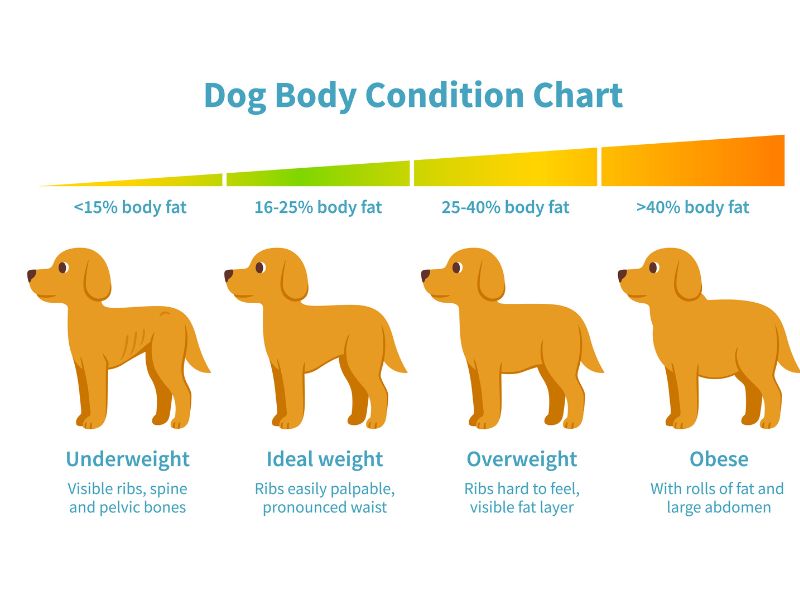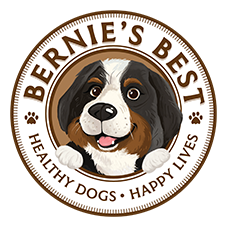If you’re worried that your dog is a bit ‘fluffier’ than it needs to be so it’s healthy, you’re not alone. Canine obesity is a real thing, so if you’re asking, “How can I get my dog to lose weight?” we’ve got some tips!
Surprisingly, over 50% of the dog population in the United States is obese. And while we often joke that our dogs are just ‘big-boned’ or ‘fluffy,’ the truth is that there are significant health issues your dog can suffer from if they’re overweight.
Health problems your dog can experience from being overweight
If your dog is overweight, there are many health conditions they can struggle with in addition to just being heavy. Some of these can be debilitating, and many definitely change their quality of life. Some of the health issues you may see and for which you’ll want to get your dog to lose weight include:
- Canine Diabetes: If your dog suffers from diabetes, they have a metabolism disorder that interferes with their ability to convert food to energy. Dog diabetes can be severe, and can lead to cataracts, liver problems, urinary tract infections, kidney failure, seizures and ketoacidosis, which can be fatal.
- Heart disease: Overweight dogs can suffer from hypertension (high blood pressure) that can lead to heart disease, and affect the quality of life.
- Difficulty breathing: Overweight dogs can suffer from breathing problems that include laryngeal paralysis or collapsed trachea. These can be serious conditions and if left untreated, may be fatal respiratory issues.
- Arthritis: Many think, “If I can get my dog to lose weight,” it may help their dog’s arthritis, and they’d not be wrong. One study of arthritis in overweight dogs found that preventing obesity reduced the risk and prevalence of hip dysplasia as well as osteoarthritis in dogs’ hips and joints.
- Joint pain: Even if your dog does not have osteoarthritis due to obesity, being overweight and the joint pain they experience may lead to bigger problems, including osteoarthritis. And either way, when there is extra weight on your dog’s frame, it’s extra pressure on their joints, and that is often painful and prevents them from living their best lives.
How do I know if my dog is overweight?
If your dog is overweight, odds are your veterinarian will let you know. There are a few ways you can eyeball it yourself, however. If your dog is overweight, you’ll notice that you can’t feel it’s ribs because there is a layer of fat over it. Also, you’ll notice they don’t really have a ‘tuck’ between their abdomen and chest. A dog’s chest should be more broad than their abdomen, so if you don’t see that distinction, or it looks like there isn’t really a ‘waistline,’ they’re likely heavier than they should be.

You can also usually tell because their energy level just doesn’t seem as good as it could be. They’re less likely to run and play, and more likely to ‘loaf’ around, even grunting some as they do get up. You may notice they sleep more, need a larger collar and even huff and puff/pant a bit more as they move around in regular activity. If your dog has a hard time walking because it’s hard for it to get up and put that pressure on legs, that’s a sign your dog may need to lose weight.
So how can I get my dog to lose weight?
It’s frustrating to hear your dog is overweight, and even more frustrating when you try to help it get back in shape. You love your dog, and you don’t want it to feel deprived. The thing is, though, if you don’t manage your dog’s weight, you could be allowing even bigger problems for your dog down the road.
Managing your dog’s weight is easier than you think! The first thing you can do is check with the veterinarian to assure your dog is healthy enough for moderate exercise. Excercise is not only a great first start for their weight issue, but it helps with their mental health too. If you want to get your dog some exercise and aren’t sure how to start, here are a few options:
- Walking – This is most likely the easiest option. Most dogs love their walks, although if your dog is overweight and walking is harder, you may have to start slow. That’s okay! It’s great to build up in shorter walks so they can go for longer ones as they get in more shape. Remember, if your dog is overweight, baby steps really do matter, so just keep trying and build up. It’s a great opportunity for you to get some exercise too, and a great way to bond.
- Outside play – If you have a yard or dog park that your dog can utilize, playing in the yard can be fun for your both. You can play fetch or just walk around as they sniff and explore. Many dogs like sprinklers or little pools on hot days, and there are quite a few dogs who are invigorated by snow play too. Find some toys that seem to interest them and see if you can just get them outside and in the fresh air. It makes lots of dogs frisky, and you may even start to see zoomies as they start to shed pounds.
- Swimming – If you have access to a pool your dog can swim in, you might find it enjoys swimming tremendously. It’s a myth, however, that all dogs can swim, or know how to immediately upon entering the water, so it’s a good idea to have it them wear life jackets as they start pool play.
Your veterinarian will also likely recommend some things to help your dog lose weight, and the first will likely be to reduce its food intake. The general gist of an overweight dog is that it’s taking in more calories than it’s burning off. Reducing calories can help your dog lose weight.
How can Bernie’s Perfect Poop help my dog lose weight?
Reducing caloric intake for your dog can certainly help them lose weight, but it also leaves them feeling hungry and you may find they come up with some pretty ‘creative’ ways to let you know they’re missing those calories. That’s why your vet may recommend adding green beans to your dog’s food as a ‘filler’ it’s stomach because of the fiber.
And while green beans definitely are fibrous vegetables that don’t offer many additional calories, there are better options you can give your dog that can also be beneficial for gut health. Bernie’s Perfect Poop has all-natural miscanthus grass, pumpkin and flax-seed as its fiber ingredients. These fibers not only help food move through your dog’s gut at just the right speed for optimal nutrient absorption, but they help your dog feel full too.
Giving Perfect Poop with every meal means you can reduce the amount of food you give your dog to reduce caloric intake, but they won’t feel that reduction because the premium fiber will help fill them up. Additionally, the prebiotics, probiotics and digestive enzymes that Perfect Poop has will help improve gut health and improve nutrient absorption, so they may have more vim and vigor to put toward exercising and losing even more weight.
That’s what we call a win-win that can help them lose excess pounds and feel better in the process.


